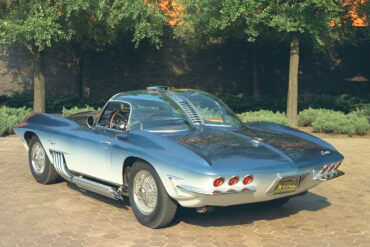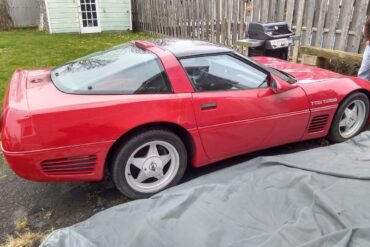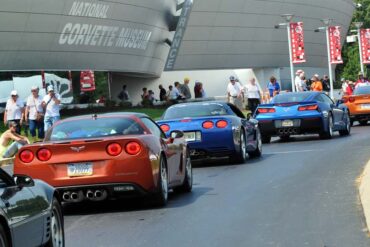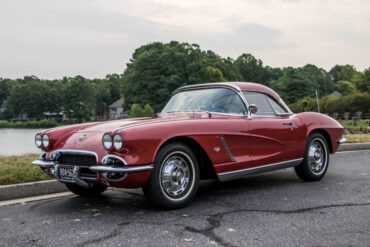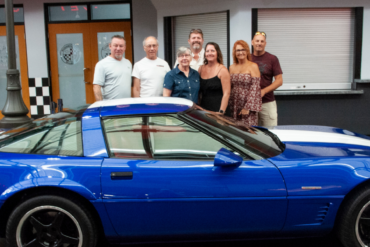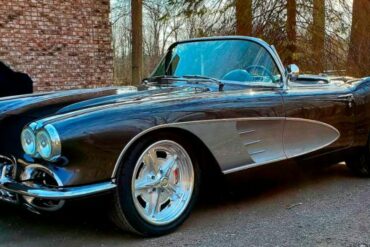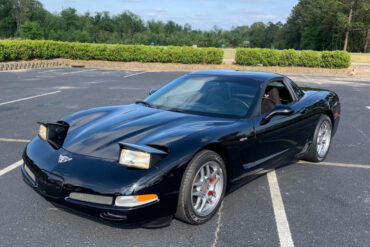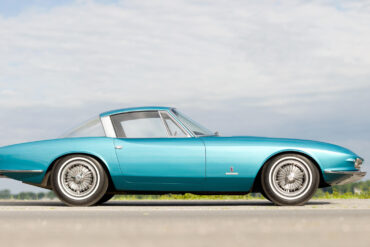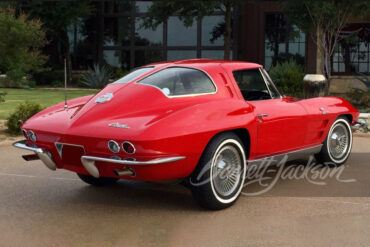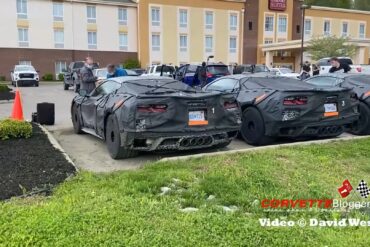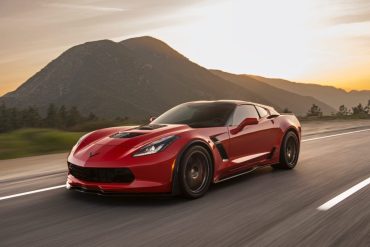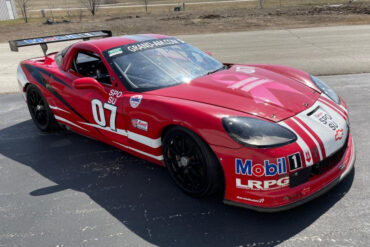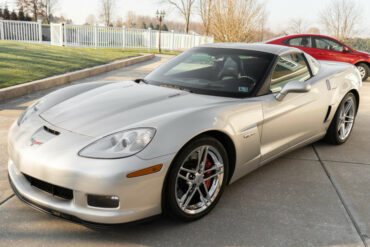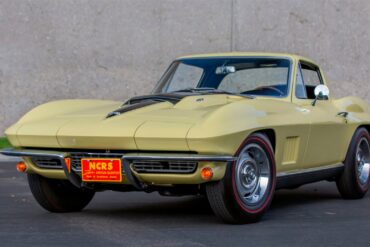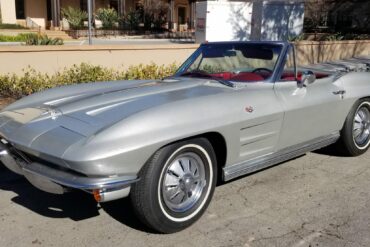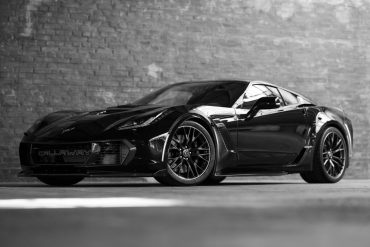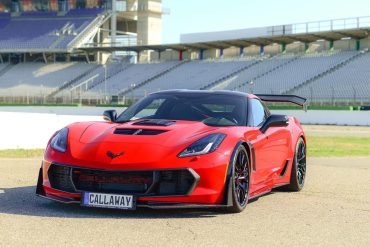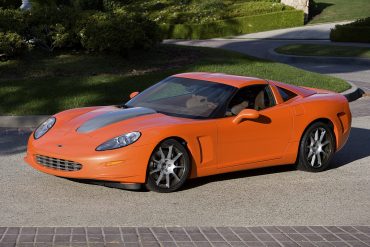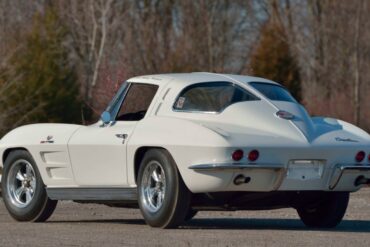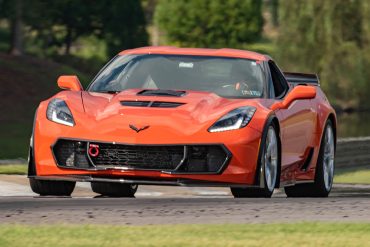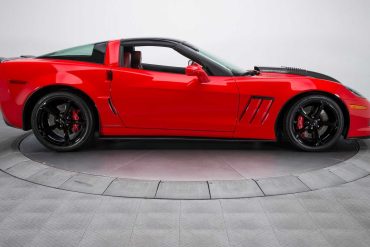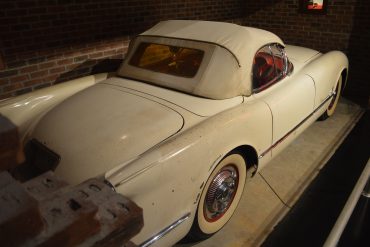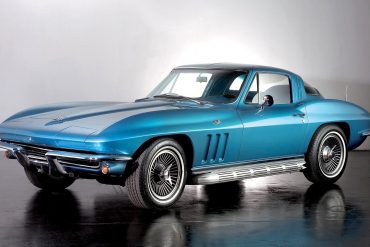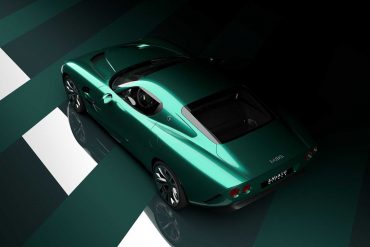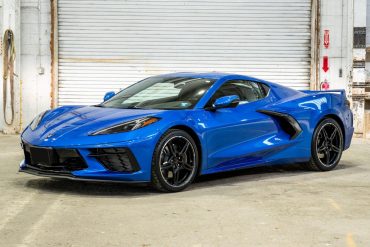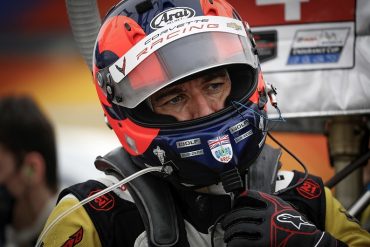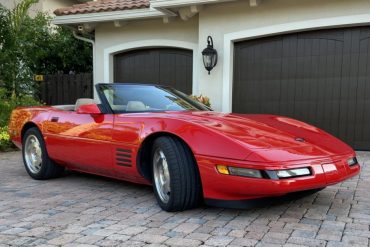As a way of celebrating Corvette Racing's monumental performance during the 2020 IMSA racing season, Chevrolet created two special-edition C8.R Corvette packages to commemorate the event. Available in either the No. 3's Design Accelerate Yellow or the No. 4's Design Hypersonic Gray, each car features special badging and trim. Other changes were minimal for 2022.
The XP-755 was designed and the prototype was built in the beginning of 1961. Bill Mitchell was very excited about the double-bubble roof, the side exhausts and rear. It is equipped with a single four-barrel carburetor that produces upwards of 425 horsepower. The Corvette XP-755 Concept had a streamlined design, pointed snout and outlandishly future looking elements everywhere. The 1961 Mako Shark I (XP-755) was an early concept.
We Found a 1989 Callaway Twin Turbo Corvette For Sale on Craigslist – It’s Almost Too Good To Be True!...
Introducing the Tremec TR-9080 DCT Automatic Transmission Unless you’ve been living off the grid, or just have an utter lack...
Are Some Corvettes Better Than Others? Since its introduction in 1953, the Chevy Corvette has been recognized as one of...
FOR SALE: A Beautiful 1962 Corvette 327/300 4-Speed It’s been a minute since we posted a car for sale on...
GM CEO Mary Barra Promises President Biden Will Be First to Drive an All-Electric Corvette During a press conference earlier...
1996 Corvette Grand Sport Donated to NCM Many of the cars showcased at the National Corvette Museum in Bowling Green,...
1961 Corvette Restomod Sells for $352k at Mecum Poll any group of Corvette enthusiasts with the question “which is better,...
FOR SALE: 5,500-Mile 2003 Chevrolet Corvette Z06! As we do from time to time, we’re bringing you an unbelievably low-mileage...
The Corvette Rondine concept was built by Pinanfarina and introduced at the 1963 Paris Motor Show. The car started life as a 1963 split-window Corvette, which is all the more unusual because Chevrolet introduced the split-window coupe at the same time that Pinanfarina was introducing a custom-built Corvette based on that very same platform.
One of the most anticipated Corvette auctions is coming to the world-renowned Barrett-Jackson Las Vegas auction June 17-19 2021, held in the West Hall of the Las Vegas Convention Center (LVCC).
Five 2022 Chevrolet Corvette Z06 Test Mules Captured on Video General Motors is currently testing five Z06 Wide Body Test...
In the tradition of coach built shooting brakes, Callaway offers the AeroWagen for any version of the C7 Corvette Coupe. Its components can be fitted to the standard production C7, the Callaway SC627 Stingray or Grand Sport, or the Callaway SC757 Z06. The AeroWagen hatch assembly is a part-for-part replacement of the original equipment Corvette rear hatch, using the original hardware and latching mechanisms. It operates in an identical fashion.
FOR SALE: A 2008 Corvette Grand-Am Race Car Today’s listing is a little different from the usual lot of cars...
FOR SALE: A 2007 Corvette Z06 with Only 9,200 Miles on the Odometer! Since the introduction of the mid-engine Corvette...
A one-of-a-kind 1967 Chevrolet Corvette L88 crossed the auction block at this past weekend’s Mecum Auctions event in Glendale, Arizona. ...
The latest piece of C2 Corvette history on the auction block is a beautiful 1964 Chevrolet Corvette finished in Satin Silver over red leather. It is listed on BringATrailer with 7 days remaining on the auction.
The 25th Anniversary Edition is a hardened up version of Callaway's Corvette SC757, which in turn is based on a C7-generation Corvette Z06. It features a supercharged V8 that pumps out 757-horsepower and 777 pound-feet of torque. The supercharger is a GenThree Callaway unit with the company's TripleCooled intercooler system. A high-flow intake system feeds that beast. Callaway's Level Two HD Cooling System also helps it avoid the overheating issues that plagued C7 Z06s.
Callaway Competition has constructed some of the most successful GT3 race cars in history. Competing against the world’s premier marques, Callaway is currently recognized as the most successful race team of the ADAC GT Masters series. To celebrate Callaway Competition’s 25th anniversary, we’re building 25 unique, specially-equipped “Callaway Champion” road cars. The Z06-based Champions are built by our expert craftsmen.
The Callaway C16 was Callaway’s 16th major automotive project. It was a limited production, bespoke automobile, built to order, by what the Press called “the best specialist engineers in the business”. These cars are seriously fast, beautiful, and exclusive. The C16 was a direct competitor for the Porsche GT3, the Lamborghini Murcielago, the Ferrari 599 GTB. It was both faster and more capable than its competitors, at less cost.
AUCTION: A 1963 Chevrolet Corvette Z06/N03 Owned by Mickey Thompson! An incredibly rare piece of Mickey Thompson’s personal fleet can...
For the 2014 model year, the Chevrolet team sculpted the seventh-generation Corvette into the most sophisticated, most feature-packed Corvette produced to date. Facing a daunting challenge, new technology enabled Callaway engineers to produce breathtaking power with seamless transition into and out of positive manifold pressure. Entirely new, Callaway’s patented GenThree supercharger design improved airflow quality and increased charge air cooling capacity.
The 2005-2013 Callaway Corvette was a specialist version of the C6 Corvette, built by Callaway Cars expert craftsmen and sold through selected Callaway/Chevrolet dealers. The 17th “C-Project” undertaken by Callaway first produced naturally-aspirated SuperNatural™ 450, 461, 490 (6.0L) and 550 (6.8L & 7.0L) horsepower Callaway Corvettes. In February 2006, Callaway returned to its positive manifold pressure roots, introducing Callaway “SuperCharged” Corvettes.
An Entombed 1954 Corvette From Maine Finds Its Way to Bowling Green, Kentucky The story of this 1954 Corvette is...
Despite its popularity, the second-gen Corvette holds the record for the fewest number of production years of any generation Corvette. The most valuable examples of the C2 Corvette live sort of like "bookends" at the start and finish of second-gen production.
The Zagato company took a C7 Corvette Z06 and transformed it into the IsoRivolta GTZ, a "spiritual descendant" of the Iso Grifo A3/C (Corsa). The original A3/C race car was developed by Giotto Bizzarrini not long after he left Ferrari, where he had served as cheif engineer behind the 250 GTO, which is revered as the world's most expensive car. Bizzarrini purportedly fancied the A3/C as his "own personal evolution of (and improvement upon) the GTO design."
FOR SALE: A 2020 Mid-Engine Corvette Stingray Coupe! Have you been looking for a 2020 Mid-Engine Corvette Stingray to call...
Oliver Gavin, Driver of the No. 3 C8.R of Corvette Racing, To Step Down from Full Time Competition Next Season...
No Reserve, Only 24k Miles The C4 Chevrolet Corvette Convertible is a fantastic car for those sunny days. There’s nothing...



